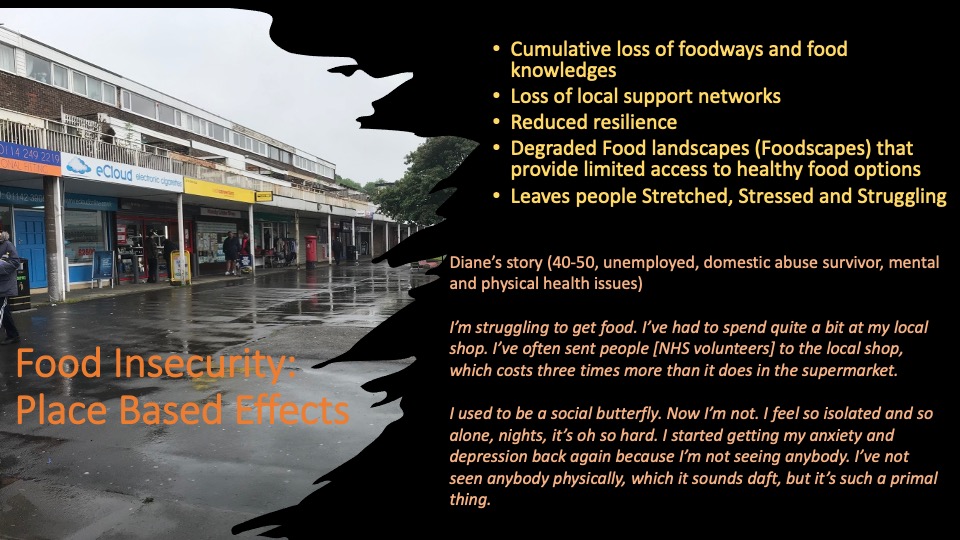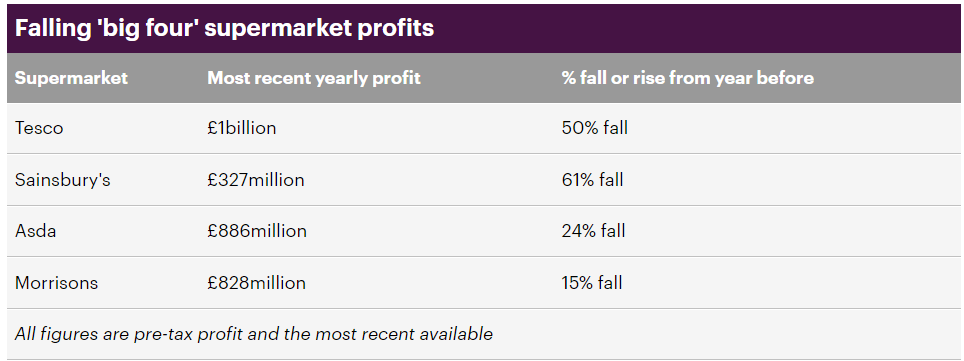Research impact is increasingly recognised as a valuable academic output. For years, much of the focus has been on translating hard science research findings into commercial products, but that is not all that research impact can be. It is sometimes difficult for those in the social sciences and humanities to understand, however, what their research impact might be when it is not easily translated into a commercial product, or as in my case, the researcher is not interested in marketing what they have produced.
My joy as an academic comes from doing research that can be mobilised to make a difference for people. I do work on food (in)security in wealthy economic contexts. I tend to focus on the United Kingdom, where I live, but this also applies to countries like the United States. I work in and with community organisations, national and international charities, government and non-government bodies, and commercial food industry organisations.
In the United Kingdom, we have a periodic review of research that includes a measure of the impact derived from research outputs. This is known as the Research Excellence Framework (REF). Units of assessment (UOAs, effectively departments) submit case studies to indicate the impact that research being conducted by academics within those units is having beyond the academy. The most recent REF period extended from 2014-2021. REF impact case studies account for about 25% of the total research score that a UOA achieves, with the remaining focusing on publications and a narrative of the research environment (see more about the REF here).
While the number of case studies submitted is relatively small from each UOA, this is not a full measure of what actually happens. As someone who supports other members of staff to consider the impact that their research is having, I can attest to the fact that what becomes a case study is just the tip of the iceberg in terms of the change that research can, and does, have.
My research was submitted as an impact case study in the REF2021. It focused on the change that my work on food security has had as I’ve tried to translate what communities are doing into a framework that enables people to “see” and then build landscapes of food support to enable people to have the food they need to live a good life free of stigma, shame, and poor health. You can read the case study here.
Many academics who are motivated by making change with their research may not want to participate in the processes associated with REF impact case studies. Producing a case study is difficult. There is a lot of work involved in writing and rewriting the narrative. You have to ask people to write testimonial letters that say how your work has helped them to make change. It is often hard to attribute what your research findings have contributed. Sometimes you don’t even know about change that has happened. It is also difficult to understand impact in REF terms, as many academics engage with research partners, explaining what they know, which may or many not be directly derived from the research they have conducted. We tell non-academics about work that others have done, or we interpret other people’s research and offer opinions about this work as it may relate to our own expertise. Filtering out what we do from what our research has done is difficult. It took me several years of working on a research case study to understand what was needed for the narrative. It is hard to take yourself–what you do–out of the picture. This doing that we do can make real change and is important, but it is not REF impact in and of itself.
The key with REF impact case studies is that they are based on what the researcher’s research findings have enabled. It always comes back to the research itself. Research findings can be methods and tools, theories, frameworks, constructs, etc. I use the following metaphor to describe what REF impact is. Keeping this in mind helps when trying to write a case study narrative.
Imagine REF impact activity as a picnic. With each interaction with impact partners–the people you want to use your research to make change–you bring along your picnic basket. Going to the picnic is not the impact. What is the impact is the difference that derrives from what you bring in your picnic basket. The basket represents your research findings in the form of publications, presentations, reports, frameworks, methodological tools that you have developed, etc. Ask yourself, what difference did my bringing along my picnic basket make to others who attended that picnic. Did you expose them to something they had never eaten before? Did you filll a hunger that they had? Were they able to eat something they brought with them because of the tools your brought with you or did you enhance the food they brought with the sauces and seasonings that you brought with you. If you had not brought your basket, what would have happened? Would people not talk to each other or share their food or would they have gone home hungry or maybe not come at all? Then ask yourself. Why does that difference matter? Was it a one-off nice event or because of that picnic and your basket new and other ways of being and belonging are enabled. More picnics are happening. New people/groups are able to join in that may have been left out. Its this extra and exteded change that matters. Not the one-offs. Showing up is not enough, you have to bring your basket with you and that basked needs to provide something that would not have been provided if you had not brought it.
Tracking that change can be really difficult. It helps if you have a specific item in that basket that people refer to in relation to you–going back to the picnic basket–perhaps you have a really great recepie for cheesecake that you always bring along. People show up at the picnics because they know that you will bring this cheesecake. They ask you for the recipe and then make it for their friends at their own picnics. The cheesecake, although being used by others, comes to be named as your cheesecake. Parties happen. People are happy and your cheesecake has enabled that. If people tweet about thier parties with your cheesecake on show, this can be evidence of the influence that your basket has made. If you can get quotes from people saying that your cheesecake is the best that they have ever had and they serve it at family events then this is also evidence.
While picnics and cheesecake may seem trite and insignificant, I find thinking about narrating impact in this way helps me to understand what evidence I need to demonstrate the change that my research is having. It shifts the lens from what I did–made a cheesecake, packed it in my basket and showed up, to the difference that the basket and its contents has made. This is what REF impact is about. You have to show up. You have to bring your basket and your basket needs to have things that you made in it. And it has to have some longer term effect on those who were also there.



You must be logged in to post a comment.